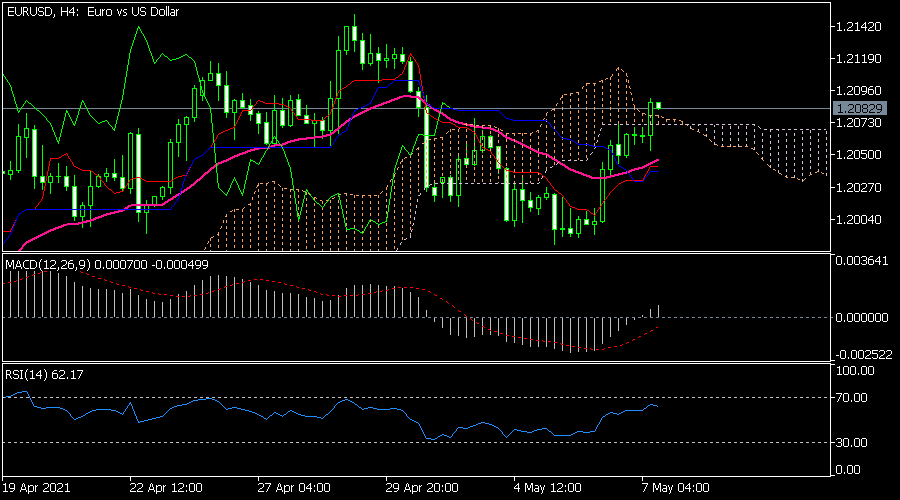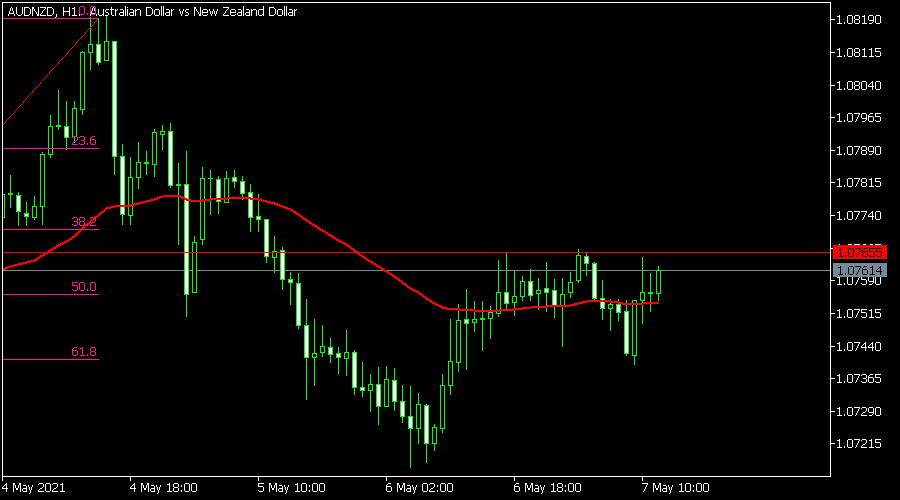The Australian dollar was little changed against the US dollar even after the relatively strong Chinese trade numbers. According to the country’s statistics agency, the total exports increased by 32.3% in April after rising by 30.6% in the previous month. This increase was better than the expected 24.1%. Imports, on the other hand, increased by 43.1%. As a result, the total trade surplus increased from $13.80 billion in March to more than $42.86 billion. This is notable since the US made a trade deficit of more than $70 billion in the previous month.
The US dollar declined slightly after the latest non-farm payroll numbers from the United States. According to the Bureau of Labour Statistics (BLS), the economy added more than 266,000 jobs in April after it added more than 916k in the previous month. As a result, the unemployment rate rose from 6.0% in March to 6.1% in April. The participation rate, on the other hand, increased from 61.5% to 61.7%, respectively. These numbers show that the American labour market is doing relatively well. However, many people are still staying at home due to virus fears while others are receiving more money in unemployment insurance.
The Canadian dollar declined after the Canadian statistics agency published the latest employment numbers. The data revealed that the economy lost more than 207k jobs in April as the economy continued to recover. The unemployment rate rose from 7.5% to 8.1% while the participation rate declined from 65.2% to 64.9%. These numbers show that the Canadian economy is doing relatively well. Elsewhere, in the UK, the construction PMI declined from 61.7 to 61.6 in April while the German exports and imports rose in March.
EUR/USD
The EUR/USD pair rose slightly after the latest US non-farm payroll numbers. On the four-hour chart, the pair managed to move above the 25-day moving average. At the same time, the signal and main line of the MACD and the RSI have pointed upwards. The pair has also moved above the Ichimoku cloud. Therefore, the pair may keep rising as bulls target the year-to-date high of 1.2152.
EUR/CAD
The four-hour chart shows that the EUR/CAD pair has been in a sharp downward trend in the past few weeks. It has fallen from a high of 1.519 to 1.4644. The pair is slightly below the 23.6% Fibonacci retracement level. It is also below the 25-day exponential moving average (EMA) and the middle line of the Bollinger Bands. The pair has also moved above the oversold level of the Relative Strength Index (RSI). The pair may likely remain in a bearish trend so long as it is below the moving average.
AUD/NZD
The AUD/NZD pair was little changed today after the latest Chinese data. On the four-hour chart, the pair is below the important support at 1.0765. It is also between the 61.8% and 50% Fibonacci retracement levels. It has also formed an inverted head and shoulders pattern, which is usually a bullish sign. It is also above the 25-day moving average. Therefore, there is a possibility that the pair will soon bounce back higher.
General Risk Warning for FX & CFD Trading. FX & CFDs are leveraged products. Trading in FX & CFDs related to foreign exchange, commodities, financial indices and other underlying variables, carry a high level of risk and can result in the loss of all of your investment. As such, FX & CFDs may not be appropriate for all investors. You should not invest money that you cannot afford to lose. Before deciding to trade, you should become aware of all the risks associated with FX & CFD trading, and seek advice from an independent and suitably licensed financial advisor. Under no circumstances shall we have any liability to any person or entity for (a) any loss or damage in whole or part caused by, resulting from, or relating to any transactions related to FX or CFDs or (b) any direct, indirect, special, consequential or incidental damages whatsoever.
Recommended Content
Editors’ Picks
EUR/USD retreats below 1.0700 after US GDP data

EUR/USD came under modest bearish pressure and retreated below 1.0700. Although the US data showed that the economy grew at a softer pace than expected in Q1, strong inflation-related details provided a boost to the USD.
GBP/USD declines below 1.2500 as USD rebounds

GBP/USD declined below 1.2500 and erased the majority of its daily gains with the immediate reaction to the US GDP report. The US economy expanded at a softer pace than expected in Q1 but the price deflator jumped to 3.4% from 1.8%.
Gold holds near $2,330 despite rising US yields

Gold stays in positive territory near $2,330 in the second half of the day on Thursday. The benchmark 10-year US Treasury bond yield is up more than 1% on the day above 4.7% after US GDP report, making it difficult for XAU/USD to extend its daily rally.
XRP extends its decline, crypto experts comment on Ripple stablecoin and benefits for XRP Ledger

Ripple extends decline to $0.52 on Thursday, wipes out weekly gains. Crypto expert asks Ripple CTO how the stablecoin will benefit the XRP Ledger and native token XRP.
After the US close, it’s the Tokyo CPI

After the US close, it’s the Tokyo CPI, a reliable indicator of the national number and then the BoJ policy announcement. Tokyo CPI ex food and energy in Japan was a rise to 2.90% in March from 2.50%.


